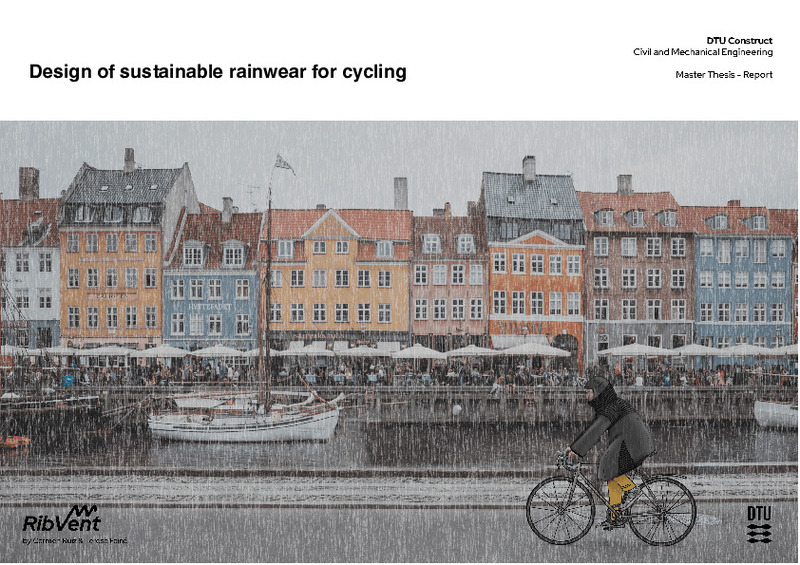|
Resumen:
|
[ES] La industria de la moda es uno de los negocios más contaminantes del mundo. La motivación de este Proyecto Final de Máster es contribuir al movimiento Slow Fashion y a los Objetivos de Desarrollo Sostenible para 2030. ...[+]
[ES] La industria de la moda es uno de los negocios más contaminantes del mundo. La motivación de este Proyecto Final de Máster es contribuir al movimiento Slow Fashion y a los Objetivos de Desarrollo Sostenible para 2030. Partiendo de esta base, y de mi situación actual como residente y estudiante de Dinamarca, mi objetivo es mejorar la experiencia ciclista en los días de lluvia y crear el traje de lluvia idóneo y sostenible.
Este proyecto quiere romper con el concepto tradicional de ropa impermeable, encontrando un material que se adapte al concepto de Rain Heroes, una colección de ropa que está en fase de desarrollo por la marca danesa Unfold the Umbrella. El diseño contribuirá al medio ambiente impulsando a la gente a ir en bicicleta los días de lluvia con un traje de lluvia cómodo, transpirable, ligero y elegante. Este diseño será el resultado de una investigación bioinspirada y de vanguardia, mediante la puesta a prueba de diferentes principios y su aplicación en un prototipo funcional. Todas estas nuevas metodologías y técnicas aprendidas del campo científico de la biomimética son habilidades competentes para aplicar en proyectos posteriores.
Este proyecto pretende desarrollar un prototipo funcional de traje de lluvia, que debe resolver simultáneamente el reto funcional de ser impermeable y transpirable. Así, el resultado final se presentará en prendas reales confeccionadas con el tejido más adecuado.
[-]
[EN] The objective of the project is to enhance the cycling experience while
wearing rainwear, to increase daily cycling commutes and consequently,
make Copenhagen a more sustainable city. The challenges and
constraints ...[+]
[EN] The objective of the project is to enhance the cycling experience while
wearing rainwear, to increase daily cycling commutes and consequently,
make Copenhagen a more sustainable city. The challenges and
constraints associated with integrating Biologically Inspired Design (BID)
into the outdoor garment industry led to the development of a final solution
called RibVent.
RibVent project is a new approach on achieving technical properties
in conceptualizing outdoor garments, by focusing on a structurallevel
unlike the traditional textilelevel approach from the current industry. The
final solution is a raincoat design with a textile inspired by the cactus
principle. This raincoat incorporates findings from the problem analysis,
the bioanalogies principles, and the textile industry. These address the
shortcomings of the current raincoat products, filling a identified market
gap.
RibVent raincoat solves the current issues the cyclists by using the
unique ribshaped textile. The structure of the ribshaped textile promotes
constant airflow to prevent excessive sweating while cycling at the same
time that protects from the rain. It keeps the cyclist dry both internally and
externally. Lastly, it incorporates features demanded by cyclists, such
as a lightweight material, a more adjustable hood, and improved leg and
hand cover, while maintaining freedom of movement for pedaling.
This report gives an overview of the development of the project, from
the process to the results and reflection on all the aspects just mentioned.
[-]
|







